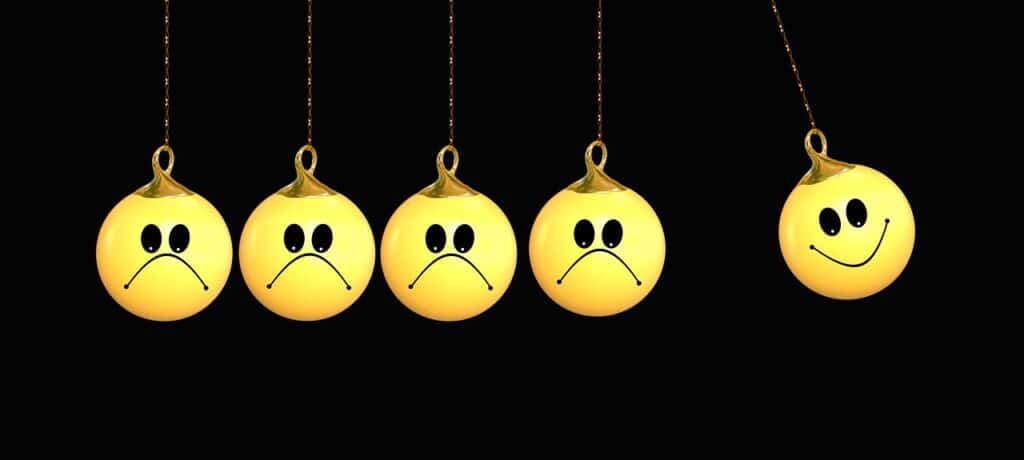It is true and very real to say that the world is in constant change.
For years, VUCA (volatile, uncertain, complex, and ambiguous) was utilised as a model to bring meaning to the unknown, a method to carefully examine, understand and articulate market turbulence. That was, until we met the pandemic, which created a scenario that made VUCA seem insufficient.
Looking back at 2022, it was the year were we all collectively tried to get on with life. The pandemic was pushed to one side, the headlines, public advisory notices and countless Covid 19 case counting stopped. The world tried to reset, to get back on track. Our gallant efforts have been met frequently with more to digest: war on Ukraine, rising inflation, economic uncertainty and tech sector disruption for example. What impact does this have on how our clients arrive into our coaching sessions? As well as the agendas that might occupy their minds?
BANI MARKETS
More recently, Jamais Cascio introduced a different model BANI (March 2020). BANI stands for brittle, anxious, non-linear, and incomprehensible. Somehow this fits better in the context of today’s markets but also with today’s clients.
Things that are brittle, are easy to shatter and subject to total and sudden failure. This has led society to look to wring every bit of value from a system. We’ve become much more conscious of our spend, of the terms and conditions of contracts, policies, subscriptions and membership packages. With this focused attention on the contracting detail, our narrative as coaches requires us to be clear on how we wish to work with our clients, the terms that sit between us, including dialling up the necessity of a good chemistry call to check in on the commitment and drive in our client to stick to a coaching schedule and rotation that we know, will best serve them.
As beings, Cascio model also outlines that we’ve also become more anxious, wrestling with a fear that any choice we make, might be the wrong one. This has led to over analysing options, seeking more data ahead of making decisions on the premise that any choice can be potentially disastrous. With coaching in mind, this propensity to be more anxious than normal might manifest in a client that struggles to decide which choice or option will serve them as they plan and move forward. This dials up the need for us to focus on helping our clients to regulate and make decisions that best align with their values. When values are truly understood, decisions become really clean and clear.
To make our decisions even tougher at present, the BANI model outlines that we are also acting in a non-linear fashion. We have become disconnected between cause and effect in time, proportion, and perception. Nothing has a single meaning and everything appears to have multiple destinations. When we lose linearity, the ups and downs are not proportional, the outcomes, good or bad, often overestimated. This makes it impossible to identify a clear start and a clear end to any well intended plan. Knowing this brings focus to the need to bring our clients’ attention to a shorter list of actions that are grounded in a pragmatic reality. They are also reward focused and designed purposefully to keep them moving forward.
Finally, the model outlines that, as a society, we have also become incomprehensible, extremely difficult, if not impossible, to understand. It has become very hard to distinguish signal from noise. Everything happens so fast, that it seems more and more we understand less. This has led society to trusting less and questioning much more. It has also led to a low attention span. With this in mind, it is important that we support our clients by participating in a good discovery, that’s open and collaborative to facilitate building rapport and trust from the very first session. It’s also important to distinguish frequently from what is real and what is imagined by asking clean language questions and bringing the clients truth to the fore, setting aside the many movies they might have running in their head.
THE COST OF LOOSING OUR TOLERANCE TO VULNERABILITY IS JOY
For years now, we have been wadding through uncertainty. The BANI model goes a long way to explain the impacts of this uncertainty on society and it leaves clues as to how our clients might be arriving into their session. It fails to explain however, why, we appear to be in a constant state of checks and balances, without feeling balanced at all. Often, the efforts we are putting in to understanding the world, ourselves and what we value most feels disproportionate to what we are left with. Why is that? What else is at play? What is the unspoken agenda that we need to bring greater awareness to within our coaching?
Well known American Professor and researcher, Brene Brown may have the answer. Brown describes joy as the most vulnerable, human emotion and when we lose our tolerance for vulnerability, as evidenced during the Pandemic, joy becomes foreboding. As humans, most of us experience foreboding joy. We believe if we allow ourselves to feel joy, we are inviting disaster in. Having been through so much, on a continuum for so long, it’s rational to think that we are terrified of being blindsided by pain. This has led us to push away joy.
THE IMPORTANCE OF REACTIVATING JOY AS WE COACH CLIENTS TO SUCCESS

Therefore, as coaches, we need to work hard to support our clients to reactivate joy. To put them at ease during our sessions. To support them to see the reality and the beauty of the world and, most importantly, to hold their issues and agendas lightly.
Brene Brown outlines that joy is an input and done well, it is sudden, unexpected and has a high frequency that expands our thinking, filling us with a sense of freedom and abandon. It’s this freedom and abandon we need to help us rebuild our lives and our tolerance to uncertainty.
This involves a whole system approach and, more likely than not, encouraging our clients to get out of their heads and into their hearts, to help them reactivate joy. Only then, can you co-activate the creativity, resourcefulness and that slice of magic that only joy will bring, to successfully see them through.
So how will you reactive joy in your next session and support your clients’ leap from the clutches of today’s BANI world?
By Gráinne Morrison, Student at Sandown Business School.
Studying the Master Diploma in Leadership Coaching & Mentoring with Science, Artistry and Science.

